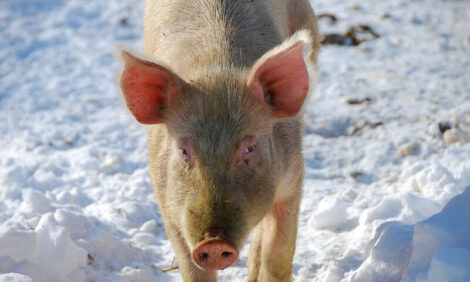



Later Weaning Helps Reduce Piglet Mortality
UK - Weaning piglets later and heavier can help to reduce piglet mortality. Allowing the piglets to be weaned at around 7kg, remaining longer with the sow can help to increase survival rates and reduce piglet mortality according to Mark Jagger from BQP Dalehead Foods.Speaking at the recent Farm Business Innovation exhibition and seminar in Birmingham, Mr Jagger in outlining the principles behind the BQP pig production system said that the company had developed production based on the five freedoms that were behind the RSPCA’s Freedom Food policy.
The system relied on the standards of:
- Freedom from hunger and thirst
- Freedom from discomfort
- Freedom from pain, injury a or disease
- Freedom to express normal behaviour
- Freedom from fear and distress.
With 44,000 breeding sows, finishing around 1000 pigs a week, the welfare of the animals plays an important role in the production systems and the success of production.
Mr Jagger said that BQP averaged 23.4 piglets per sow with a feed conversion ratio of 2.31, both well above the national average.
The average pre-weaned mortality rate is around 13 per cent and 12.7 per cent for the whole of the EU, but Mr Jagger said that the BQP system has an even lower mortality rate.
Recently in Denmark, the Danish Pig Research Centre announced moves to improve piglet survival rates at weaning.
In 2014, the survival rates were 78 per cent – showing a 22 per cent mortality. The Danish industry is now seeking to reduce that to 20 per cent with 80 per cent survival, potentially putting 500,000 more piglets into the market.
However, Mr Jagger said that if the piglets were left with the sow for just a week longer and were weaned at around 7kg rather than 4kg, then survival rates would improve.
He said that the extra time with the sow suckling the mother’s milk helps to improve survival rates.
He added that the BQP system of straw based non-slatted pens for indoor rearing also help to improve welfare conditions and improve the rearing conditions for the pigs.
“Straw based pig production is the way forward. It’s a higher input cost but better welfare,” Mr Jagger said.
“All the sows are outdoor, but the finishing accommodation is straw based.”
He added that paying attention to details in the production system, increases the welfare the animals and reduces potential losses.








